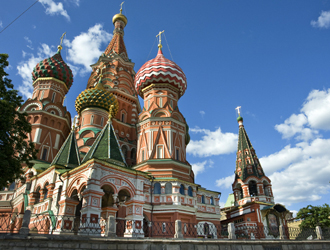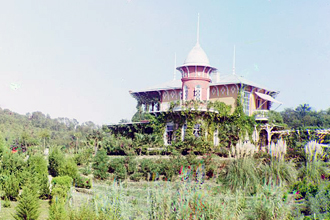A view into Russian culture and history

There is no more prominent landmark in Russia than St. Basil's Cathedral on Red Square in Moscow, shown in 2012. (Photo by William Craft Brumfield)
Brumfield says visitors to Russia would have to travel many hours to see the iconic architecture.
Before the 1900s, Sochi was an outpost on the shores of the Black Sea, which became a popular resort town under the regime of Joseph Stalin.
St. Basil's Cathedral in Moscow (more than a thousand miles from Sochi) has endured since the time of Ivan the Terrible, in the 16th century.
Elected to the State Russian Academy of Architecture and Construction Sciences and the Russian Academy of the Arts, Brumfield has documented Russian architecture for four decades.
His photographs, which have been exhibited at numerous galleries and museums, are part of the collection of the Photographic Archives at the National Gallery of Art, Washington, D.C.

A dacha near Sochi, 1912, Sergei Mikhailovich Prokudin-Gorskii Collection (Library of Congress).
The 95th of Brumfield's articles and photo essays for the foreign-language service of the Russian national newspaper Rossiiskaia Gazeta is on “The Cathedral of Archangel Michael: The Kremlin's royal shrine,” with its silver and golden domes.
“Russia is enormously important to our civilization and to our history,” Brumfield says. “These architectural monuments provide a window onto Russian history and culture, a view of what the Russians have created and who they are.”
Brumfield's documentation of these historic landmarks is a race against time. Many of the structures are being lost to fires, lightning strikes, neglect and progress. Through his photographs now numbering more than 170,000 these Russian treasures may be seen by future generations.
